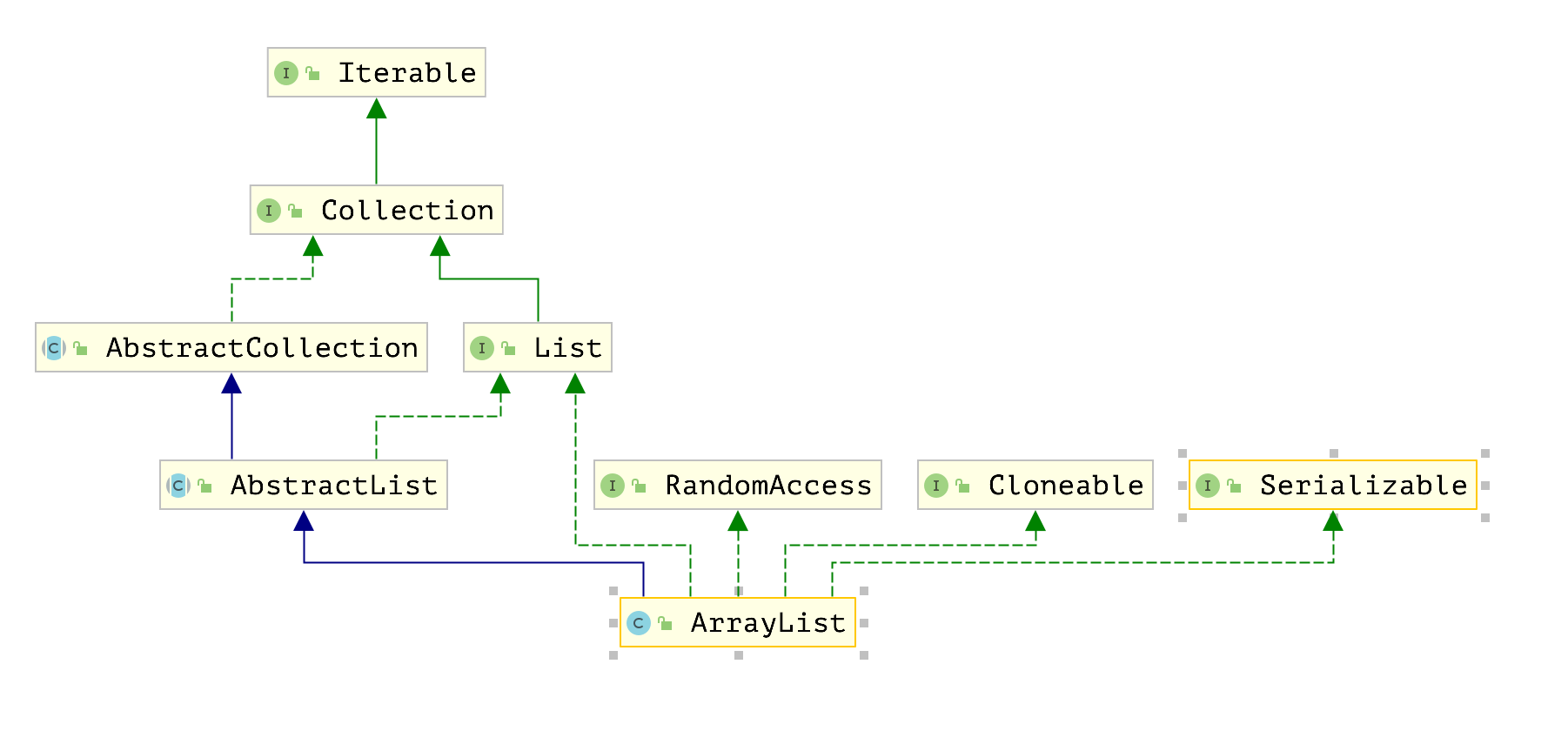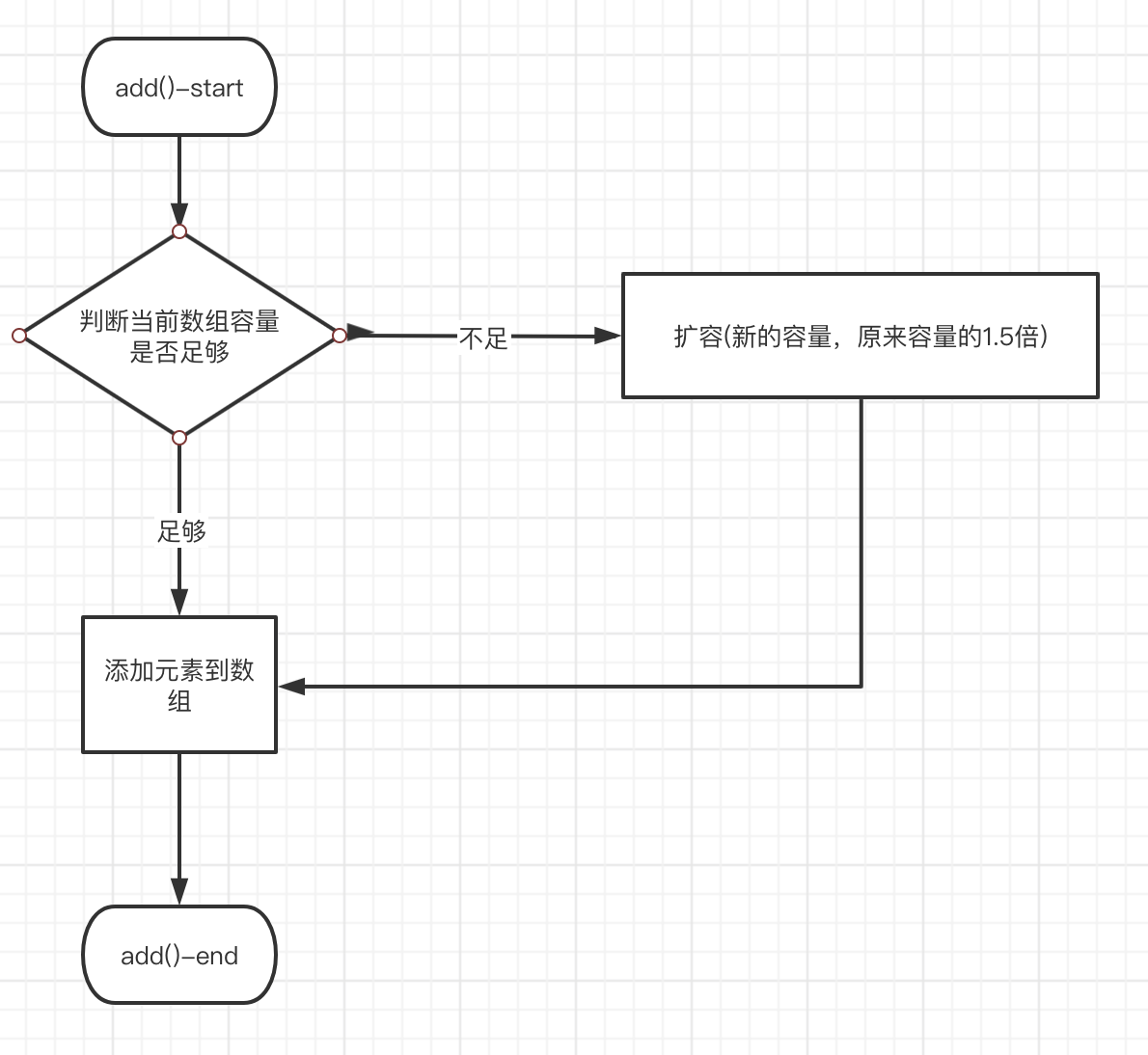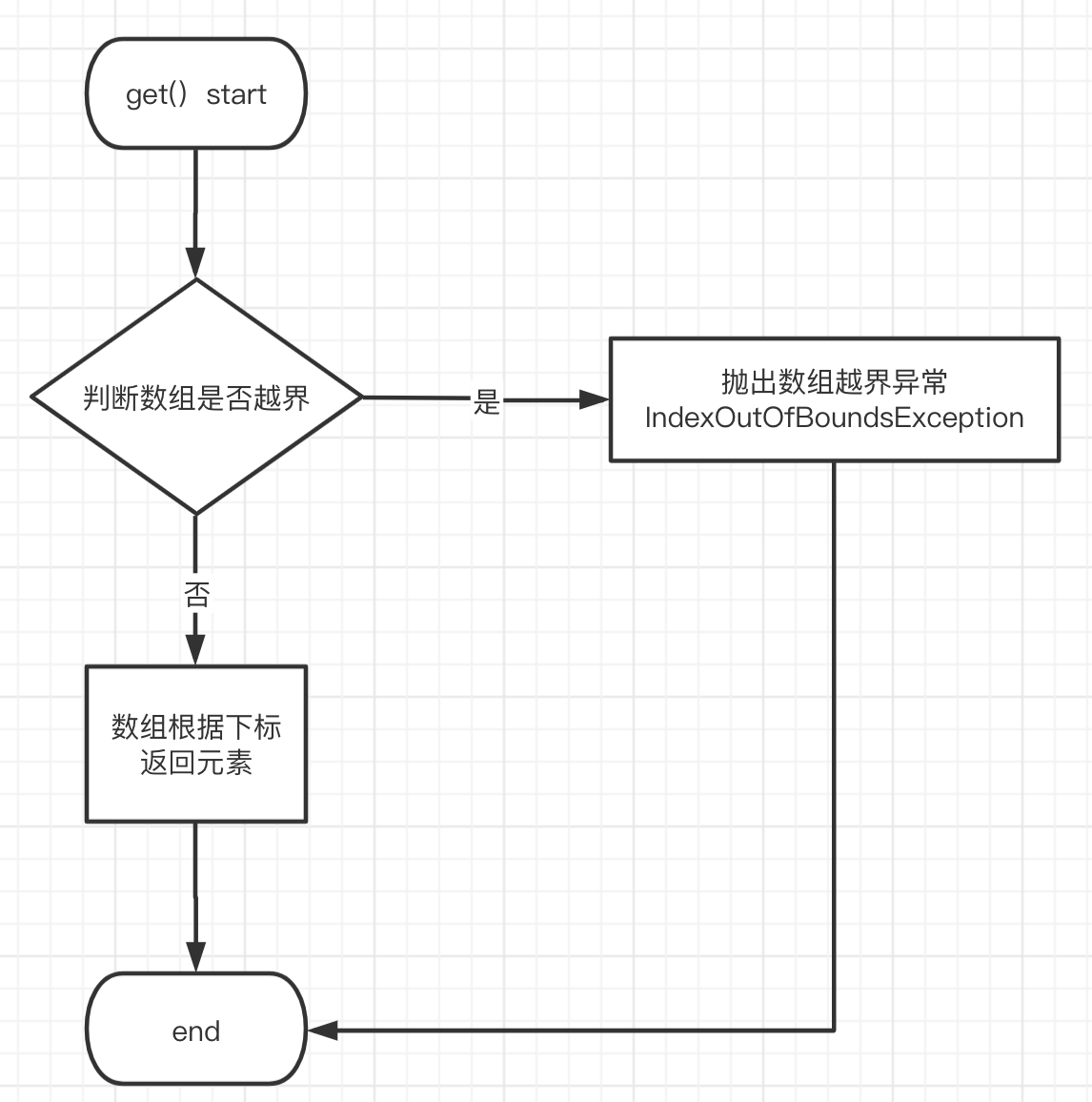ArrayList是java集合框架常用的集合类之一,底层是基于数组来实现容量大小动态变化的。
下图是ArrayList实现的接口和继承的类关系图:

public class ArrayList<E> extends AbstractList<E>
implements List<E>, RandomAccess, Cloneable, java.io.Serializable
1、实现了四个接口
1.1. java.util.List 接口,提供数组的添加、删除、修改、迭代遍历等操作。
1.2. java.util.RandomAccess 接口,表示 ArrayList 支持快速的随机访问。(RandomAccess 是 List 实现所使用的标记接口,用来表明其支持快速(通常是固定时间)随机访问。此接口的主要目的是允许一般的算法更改其行为,从而在将其应用到随机或连续访问列表时能提供良好的性能。)
1.3. java.io.Serializable 接口,表示 ArrayList 支持序列化的功能。
1.4. java.lang.Cloneable 接口,表示 ArrayList 支持克隆。
2、继承了AbstractList抽象类
2.1AbstractList抽象类就是List分支的顶层超类。此类提供了List接口的骨干实现,以最大限度地减少实现由“随机访问”数据存储(例如数组、链表)支持的此接口所需的工作量
/**
* Appends the specified element to the end of this list.
* 添加单个元素方法
* @param e element to be appended to this list
* @return <tt>true</tt> (as specified by {@link Collection#add})
*/
public boolean add(E e) {
//判断如果容量不够,进行扩容
ensureCapacityInternal(size + 1); // Increments modCount!!
//设置到数组末尾,然后在size+1
elementData[size++] = e;
return true;
}
//保证数组大小是否足够,不足则1.5倍扩容
private void ensureCapacityInternal(int minCapacity) {
ensureExplicitCapacity(calculateCapacity(elementData, minCapacity));
}
//计算数组,最小需要的长度
private static int calculateCapacity(Object[] elementData, int minCapacity) {
if (elementData == DEFAULTCAPACITY_EMPTY_ELEMENTDATA) {
//new ArrayList()初始化的时候 elementData = DEFAULTCAPACITY_EMPTY_ELEMENTDATA
//在添加的时候在初始化长度为10的数组
return Math.max(DEFAULT_CAPACITY, minCapacity);
}
return minCapacity;
}
private void ensureExplicitCapacity(int minCapacity) {
modCount++;
// overflow-conscious code
//判断数组容量是否足够,不足进行扩容
if (minCapacity - elementData.length > 0)
grow(minCapacity);//数组扩容
}
/**
* Increases the capacity to ensure that it can hold at least the
* number of elements specified by the minimum capacity argument.
* 数组扩容,增加容量以确保它至少可以容纳最小容量参数指定的元素数
* @param minCapacity the desired minimum capacity
*/
private void grow(int minCapacity) {
int oldCapacity = elementData.length;
int newCapacity = oldCapacity + (oldCapacity >> 1);//新数组长度是旧数组的1.5倍
if (newCapacity - minCapacity < 0)//判断新数组需要的长度,是否比需要数组需要的最小容量小
newCapacity = minCapacity;
if (newCapacity - MAX_ARRAY_SIZE > 0)//判断新数组长度是否大于MAX_ARRAY_SIZE【2147483647-8】
newCapacity = hugeCapacity(minCapacity);//判断 最小容量大于MAX_ARRAY_SIZE返回Integer.MAX_VALUE 否则返回 MAX_ARRAY_SIZE
elementData = Arrays.copyOf(elementData, newCapacity);//复制当前数组到一个新数组(长度为newCapacity),并返回
}
//判断 最小容量大于MAX_ARRAY_SIZE返回Integer.MAX_VALUE 否则返回 MAX_ARRAY_SIZE
private static int hugeCapacity(int minCapacity) {
if (minCapacity < 0) // overflow
throw new OutOfMemoryError();
return (minCapacity > MAX_ARRAY_SIZE) ?
Integer.MAX_VALUE :
MAX_ARRAY_SIZE;
}
流程图:

根据下标获取元素
public E get(int index) {
rangeCheck(index);//判断当前下标是否数组越界,越界抛出IndexOutOfBoundsException异常
//根据数组下标获取元素
return elementData(index);
}
//判断当前下标是否数组越界,越界抛出IndexOutOfBoundsException异常
private void rangeCheck(int index) {
if (index >= size)
throw new IndexOutOfBoundsException(outOfBoundsMsg(index));
}
//根据数组下标获取元素
@SuppressWarnings("unchecked")
E elementData(int index) {
return (E) elementData[index];
}

1、public E remove(int index)
删除列表中指定位置的元素。将任何后续元素向左移动
//根据下标删除数组元素,下标右边元素向左移
public E remove(int index) {
rangeCheck(index);//判断当前下标是否数组越界,越界抛出IndexOutOfBoundsException异常
modCount++;//数组修改+1
E oldValue = elementData(index);//根据下标获取数组元素
int numMoved = size - index - 1;//元素向左移动的长度
if (numMoved > 0)
System.arraycopy(elementData, index+1, elementData, index,
numMoved);//当前下标-后续元素向左移动
//先size-1设置null删除元素,方便gc回收
elementData[--size] = null; // clear to let GC do its work
return oldValue;//返回旧的值
}
2、public boolean remove(Object o)
删除数组的第一个匹配元素,
//删除数组的第一个匹配的元素
public boolean remove(Object o) {
if (o == null) {
for (int index = 0; index < size; index++)
if (elementData[index] == null) {
fastRemove(index);//根据下标删除元素,逻辑同remove(int index)方法
return true;
}
} else {
for (int index = 0; index < size; index++)
if (o.equals(elementData[index])) {
fastRemove(index);//根据下标删除元素,逻辑同remove(int index)方法
return true;
}
}
return false;
}
//取得当前元素下标,查找不到返回-1 代码逻辑跟 remove(Object o) 类似
public int indexOf(Object o) {
if (o == null) {
for (int i = 0; i < size; i++)
if (elementData[i]==null)
return i;
} else {
for (int i = 0; i < size; i++)
if (o.equals(elementData[i]))
return i;
}
return -1;
}
原文:https://www.cnblogs.com/x-kq/p/14643902.html